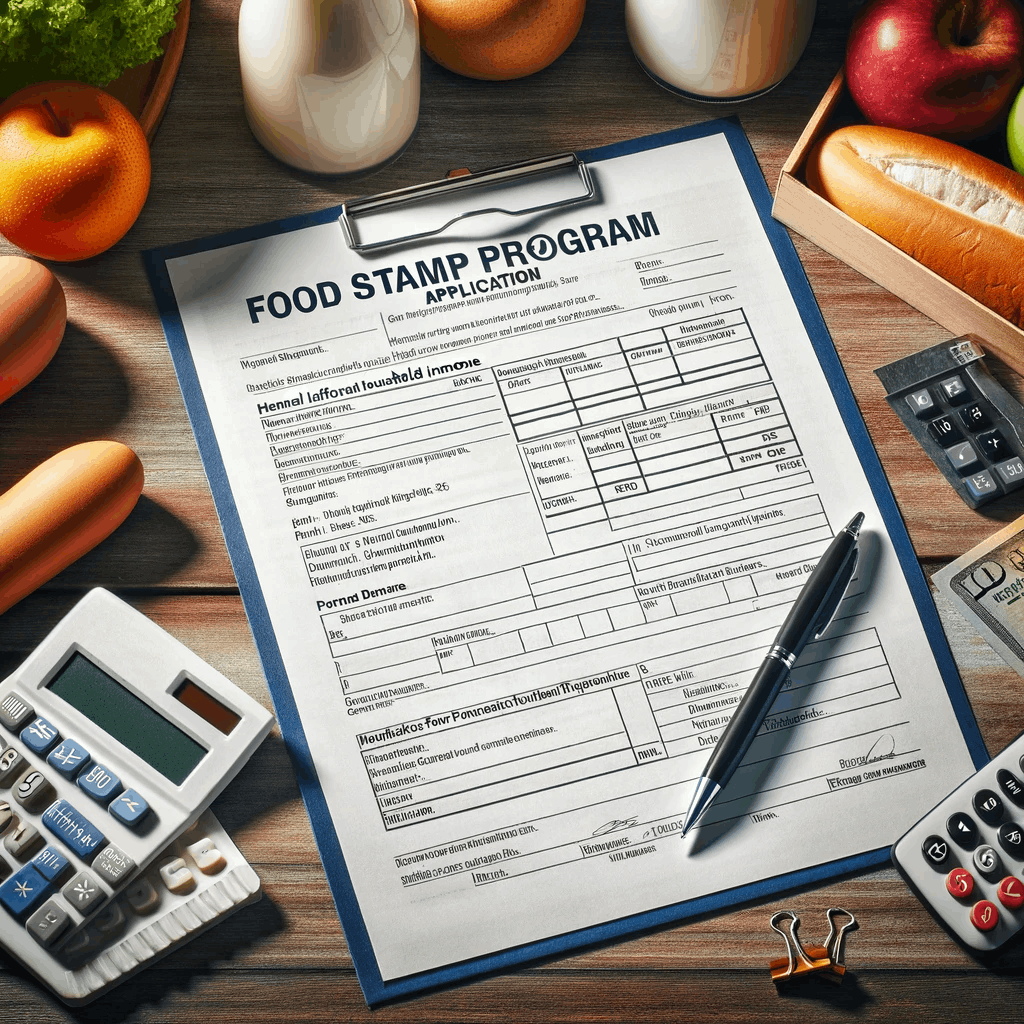SNAP, the Supplemental Nutrition Assistance Program, is a vital lifeline for individuals and families facing food insecurity. If you need assistance, learning how to navigate the application process is the first step toward securing essential benefits.
In this guide, we’ll walk you through the ins and outs of applying for SNAP Benefits, providing you with the knowledge and tools to access the support you deserve.

Eligibility Criteria
Before applying for SNAP Benefits, it’s crucial to understand the eligibility criteria. Meeting these requirements is essential to access this vital support program. Here’s a concise list of the eligibility criteria you need to meet to qualify for SNAP Benefits:
- Income Threshold: Your household income must fall below a certain threshold, which varies by state and household size.
- Household Size: SNAP eligibility considers the number of people in your household when determining benefits.
- Citizenship or Legal Status: U.S. citizens, certain non-citizens, and refugees are generally eligible, but undocumented immigrants are not.
- Work Requirements: Able-bodied adults without dependents may have work requirements.
- Asset Limits: Some states have asset limits for eligibility, while others do not.
- Deductions: Certain expenses, such as housing and utility costs, may be deducted from your income, potentially increasing your eligibility.
- Criminal History: Some felony convictions may affect your eligibility for SNAP benefits.
Gathering Necessary Documentation
Gathering the necessary documentation is a crucial part of the SNAP application process. Ensuring you have all the paperwork ready will streamline your application and help you access benefits efficiently.
Here’s a checklist of the essential documents you’ll need to gather:
- Proof of Identity: A driver’s license, passport, or state ID card for all household members.
- Social Security Numbers: For all household members or proof of application for those without.
- Proof of Income: Pay stubs, W-2 forms, or tax returns for the past month or year, depending on your income source.
- Proof of Expenses: Documentation for rent or mortgage payments, utilities, childcare costs, and any other allowable deductions.
- Bank Statements: To verify all household members’ assets and bank account balances.
- Immigration Status: Proof of legal immigration status for non-citizens applying for benefits.
- Medical Expenses: If applicable, documents related to medical bills and expenses.
- Other Income Sources: Documentation for any other sources of income, such as alimony, child support, or veterans’ benefits.
- Citizenship or Legal Status: Proof of U.S. citizenship or eligible non-citizen status.
- Proof of Residency: A utility bill, lease agreement, or another document confirming your address.
How to Obtain and Organize the Necessary Paperwork
Obtaining and organizing the necessary paperwork is vital to applying for SNAP Benefits successfully. Here’s a straightforward guide on how to efficiently gather and arrange the required documents:
- Identify Required Documents: Review the list of required documents for SNAP applications to know exactly what you need.
- Contact Relevant Authorities: Contact employers, banks, or agencies to request copies of necessary documents, such as pay stubs, bank statements, or tax records.
- Check Online Resources: Some documents, like utility bills or bank statements, can often be accessed online through your account portals.
- Make Copies: Once you have the documents, make clear, legible copies of each to include with your application.
- Organize in a Folder: Create a folder or envelope for your SNAP application paperwork to keep everything together.
- Label and Sort: Label each document clearly and arrange them according to the application guidelines.
- Keep It Handy: Store the folder in a safe and easily accessible place so you can provide the necessary documentation when needed.

Step-by-Step Application Process
Understanding the process is crucial whether you opt for an online or in-person application for SNAP Benefits. Here’s a step-by-step breakdown of both methods to help you navigate the application with ease:
Online Application Process:
- Visit the SNAP Website: Go to the official SNAP website for your state.
- Create an Account: Register for an account if required by your state’s system.
- Complete the Application: Fill out the SNAP application form online.
- Upload Documents: Scan and upload the required documents as instructed.
- Submit the Application: Review and submit your application electronically.
- Await Confirmation: Wait for confirmation and further instructions from the SNAP office.
- Interview: Participate in a phone or in-person interview if requested.
- Receive EBT Card: Once approved, you’ll receive an Electronic Benefits Transfer (EBT) card for purchasing food.
In-Person Application Process:
- Locate a Local Office: Find your nearest SNAP office or eligibility center.
- Visit the Office: Walk in during office hours or schedule an appointment if required.
- Obtain an Application: Request and fill out a paper SNAP application form.
- Submit Documents: Provide copies of required documents to the staff.
- Submit Application: Hand in your completed application to the staff at the office.
- Interview: Participate in an in-person interview at the office.
- Await Approval: Wait for approval and further instructions from the SNAP office.
- Receive EBT Card: Once approved, you’ll receive an Electronic Benefits Transfer (EBT) card for purchasing food.
Interview and Verification
After submitting your SNAP Benefits application, the interview and verification process is crucial. It ensures that your eligibility is accurately assessed. Here’s what you need to know:
Interview Process:
- Notification: You’ll receive a notice about your interview by phone, mail, or in person.
- Participation: Attend the interview as scheduled, providing any requested documentation.
- Clarify Information: Be prepared to answer questions about your household and financial situation.
- Review Rights: If needed, understand your rights during the interview and the appeals process.
Verification of Eligibility:
- Documentation Review: The SNAP office will verify your provided information and documents.
- Accuracy Matters: Ensure all information is accurate and consistent with your application.
- Timely Response: Respond promptly to any additional requests for information.
- Approval or Denial: You’ll be approved or denied SNAP benefits based on the interview and verification.
- Appeals: You can appeal the decision within a specific timeframe if denied.
Waiting Period and Approval
After completing the interview and verification process, the waiting period for SNAP Benefits approval can be crucial. Understanding what to expect during this period is essential. Here’s a breakdown:
Waiting Period:
- Processing Time: The SNAP office will process your application, which can take up to 30 days.
- Expedited Services: In urgent cases, you may qualify for expedited benefits, which are processed within seven days.
- Check Application Status: You can inquire about your application’s status by contacting the SNAP office or checking online, depending on your state’s system.
Approval:
- Notification: You’ll receive a notification about the approval or denial of your application.
- Benefit Amount: If approved, you’ll be informed of the amount you’ll receive monthly.
- Electronic Benefit Transfer (EBT) Card: You’ll receive an EBT card for food purchases.
- Benefits Start Date: Your benefits typically start from your application or interview date.
The Bottomline
SNAP Benefits, or the Supplemental Nutrition Assistance Program, are vital for addressing food insecurity. Learning how to apply is critical.
By understanding eligibility, gathering required documents, and navigating the process, you can access essential support to ensure access to nutritious food online or in person.
SNAP is a lifeline for those in need, promoting their well-being and alleviating hunger, making it a critical program for individuals and families facing economic challenges.




